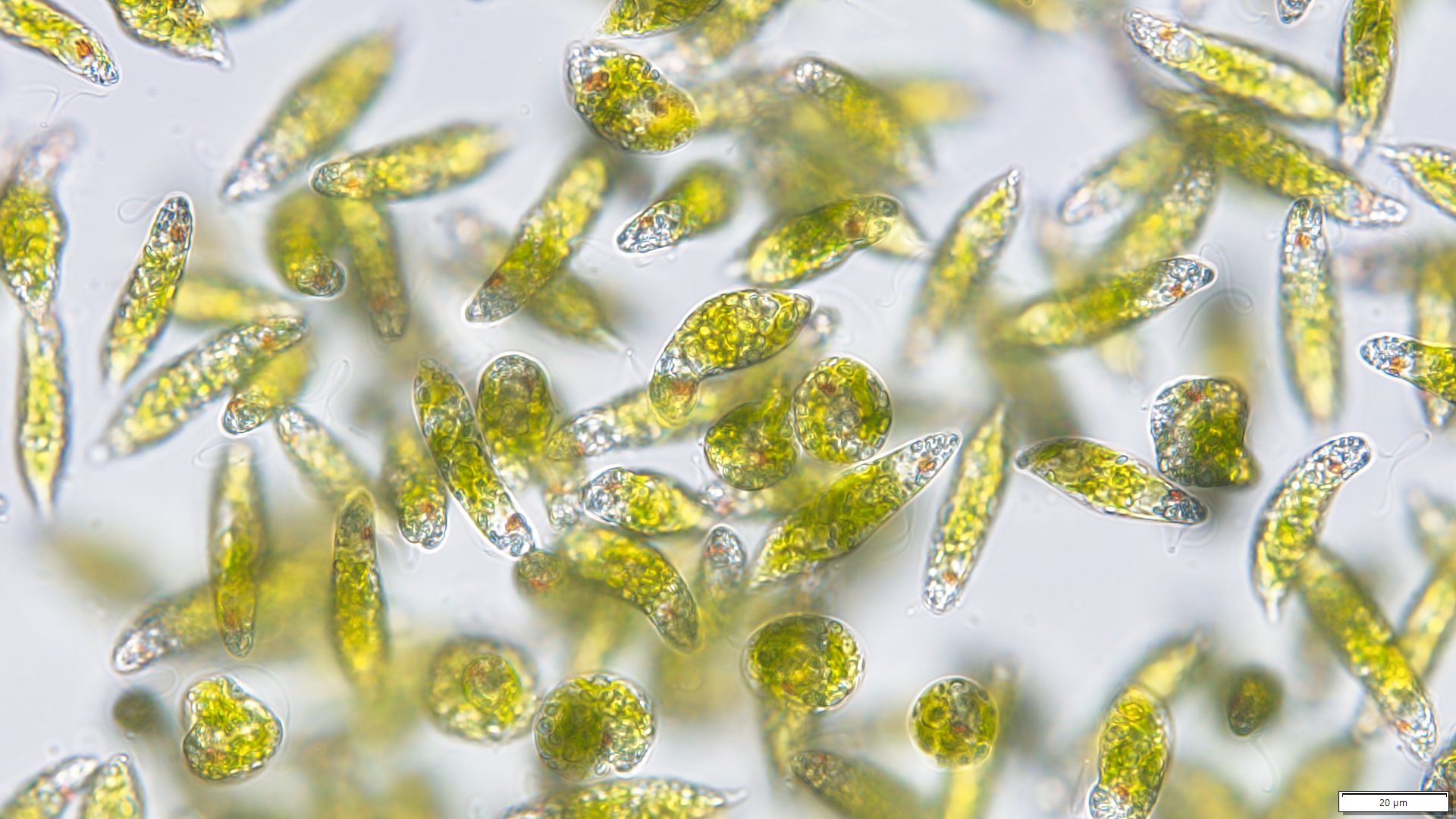Scientific Scope
In keeping with a long-standing tradition, this year’s IAP workshop will focus on both an ecological and taxonomic theme. The ecological topic for this meeting is "Phytoplankton ecology studied at various temporal and spatial scales", addressing the dynamics of phytoplankton communities across different scales of observation.
For the taxonomic focus, we have extended the scope to include two topics: "Cyanobacteria" and "Euglenophyceae", reflecting the ongoing advancements in the classification and understanding of these groups.
Phytoplankton ecology studied at various temporal and spatial scales
Phytoplankton exhibits dynamic ecological patterns across a range of temporal and spatial scales (e.g., Harris, 1980, Padisák 1992) and along the trophic gradient (Reynolds 1984). In phytoplankton dynamics, there is a hierarchy of processes operating at different temporal and spatial scales, which results in patchiness in both time and space in terms of biomass and species composition (Reynolds 1990). To collect a representative sample of freshwater phytoplankton, it is important to consider its spatial heterogeneity and non-homogeneous distribution in the water column. Phytoplankton often forms patches or layers influenced by factors such as light, temperature, nutrient gradients or water movement. To account for this variability, sampling should be conducted at multiple depths where distinct phytoplankton communities may exist in surface layers, thermoclines or deeper waters. Typical examples are subsurface or deep chlorophyll maxima often found in stratified water bodies (Cullen 2015). Therefore, integrating vertical sampling or collecting discrete samples at key depths helps to capture this variability. Even today, when advances in instrumentation allow the use of fluorescence-based profilers that facilitate in situ measurement of the vertical distribution of phytoplankton, classical microscopic techniques are essential to determine the quantity of individual phytoplankton taxa. Regardless of which method we use, sampling at multiple locations in the water body can account for horizontal heterogeneity caused by inflows (Rychtecký and Znachor 2011), wind-driven mixing (Znachor et al. 2023) or local nutrient enrichment (Caputo et al. 2008). Even if we achieve the "representativeness" of the samples in terms of spatial variability, the temporal aspect comes into play.
On the shortest time scales, phytoplankton communities respond rapidly to changes in light, temperature and nutrient availability. Changes in light intensity, for example, drive photosynthetic activity and influence cellular processes such as carbon fixation and nutrient uptake. Diurnal variability, i.e. the day-night cycle, has a significant impact on phytoplankton as light availability changes dramatically within a 24-hour period. During daylight, photosynthetic activity peaks, leading to increased biomass and oxygen production, while at night, respiration dominates, resulting in a net carbon loss.
On a seasonal scale, phytoplankton communities undergo predictable successions driven by changes in temperature, light, nutrient availability and biological interactions (Reynolds 1984, Sommer et al. 1986). In temperate regions, the spring bloom marks a period of rapid phytoplankton growth fueled by increasing light and nutrient availability due to winter mixing. During the summer, when thermal stratification develops, the lack of nutrients in surface waters often leads to a shift in community composition in favour of species adapted to low-nutrient conditions, such as cyanobacteria. The optimised sampling strategy, reflecting the generation times of the algae, allows a precise description of the seasonal succession in adequate detail, which is crucial for understanding how phytoplankton support higher trophic levels, as different species provide varying nutritional value for zooplankton and fish.
Long-term studies, spanning years to decades, reveal how phytoplankton communities respond to gradual environmental changes such as climate change, eutrophication, or changing hydrological regimes. These trends often show shifts in species dominance, altered bloom timing, and changes in community resilience. Long-term data also help to determine the effects of large-scale climatic events on phytoplankton dynamics. These studies are critical for predicting future ecosystem changes and determining management strategies for water quality and ecosystem health. Understanding phytoplankton ecology requires holistic ecosystem approaches that consider both the spatial heterogeneity of the environment and temporal changes. Each temporal scale - from minute to minute, daily cycles, day-to-day variability to long-term trends spanning decades - provides unique insights into the processes driving phytoplankton dynamics and their responses to environmental variability.
"Cyanobacteria" and “Euglenophyceae”
Considering the detrimental effect of phytoplankton blooms on water quality and the ecological integrity of freshwater systems, some phytoplankton groups are far more important than others. Undisputedly, cyanobacteria are on the top of the list of nuisance planktonic organisms; therefore, they are suggested to be the taxonomic topic of the meeting. We also included Euglenophyceae as a subject of our taxonomic workshop since they can also form blooms, sometimes even toxic, such as those caused by Euglena sanguinea. Recognition of newly defined taxa in euglenoid research is crucial for better understanding of their species-specific autecology. Advances in molecular taxonomy may provide deeper insights into their ecological roles and interactions.

Dolichospermum lemmermannii

Euglena geniculata
Caputo, L., L. Naselli-Flores, L.J. Ordoñez & J. Armengol. (2008). Phytoplankton distribution along trophic gradients within and among reservoirs in Catalonia (Spain). Freshwater Biology 53: 2543–2556.
Cullen, J.J. (2015). Subsurface chlorophyll maximum layers: enduring enigma or mystery solved? Annual Review of Marine Science, 7, 207–239.
Harris, G.P. (1980). Temporal and spatial scales in phytoplankton ecology. Mechanisms, methods, models, and management. Canadian Journal of Fisheries and Aquatic Sciences, 37: 877–900.
Padisák, J. (1992). Spatial and temporal scales in phytoplankton ecology. Abstracta Botanica, 16, 15–23. http://www.jstor.org/stable/43519281
Reynolds, C. S. (1984). Phytoplankton periodicity: the interactions of form, function and environmental variability. Freshwater Biology 14: 111–142.
Reynolds C.S. (1990): Temporal scales of variability in pelagic environments and the response of phytoplankton. Freshwater Biology 23: 25–53. https://doi.org/10.1111/j.1365-2427.1990.tb00252.x
Sommer, U., Gliwicz, Z.M., Lampert, W., Duncan, A. (1986): The PEG-model of seasonal succession of planktonic events in fresh waters Archiv fur Hydrobiologie 106: 433–471.
Rychtecký, P. & Znachor, P. (2011): Spatial heterogeneity and seasonal succession of phytoplankton along the longitudinal gradient in a eutrophic reservoir. Hydrobiologia 663: 175–186.
Znachor, P., Nedoma, J., Kolar, V., Matoušů, A. (2023): Spatial and temporal variability of methane emissions and environmental conditions in a hyper-eutrophic fishpond. Biogeosciences 20: 4273–4288. https://doi.org/10.5194/bg-20-4273-2023